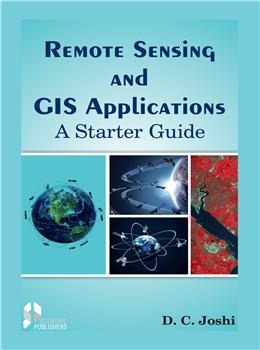Remote Sensing and GIS Applications: A Starter Guide
Remote Sensing and GIS Applications: A Starter Guide is backordered and will ship as soon as it is back in stock.
Couldn't load pickup availability
Genuine Products Guarantee
Genuine Products Guarantee
We guarantee 100% genuine products, and if proven otherwise, we will compensate you with 10 times the product's cost.
Delivery and Shipping
Delivery and Shipping
Products are generally ready for dispatch within 1 day and typically reach you in 3 to 5 days.
Book Details:
-
Author: D.C. Joshi
-
Publisher: Scientific Publishers
-
Language: English
-
Edition: 1st
-
Year: 2019
-
ISBN: 9789388172547
-
Pages: 211
-
Cover: Hard Bound
-
Dimensions: 5.70 x 8.70 x 1.25 inches
-
Weight: 408 grams
About the Book:
This book serves as a comprehensive guide to Satellite Remote Sensing and Geographical Information System (GIS), a rapidly evolving technology with immense potential for accurate assessment and efficient management of natural resources. With the increasing importance of remote sensing in fields like engineering, agriculture, forestry, geology, geography, and environmental science, this text has been developed to cater to the academic needs of students and educators, as well as resource planners.
Written in clear, explanatory language and enriched with illustrations, the book ensures that even readers with no prior experience can grasp the fundamentals and interpret satellite imagery effectively. It is divided into 19 chapters, grouped into two core sections:
-
Fundamentals of Remote Sensing Technology – Covering essential topics such as satellite systems, sensor types, spectral reflectance, image interpretation techniques, and an introduction to GIS.
-
Applications of Remote Sensing and GIS – Exploring practical uses like landform identification, soil and water resource mapping, land use and wasteland classification, desertification mapping, crop monitoring and estimation, watershed planning, and disaster management.
Supported by detailed case studies, this book is a valuable resource for academic institutions and professionals engaged in the sustainable planning and monitoring of natural resources.





